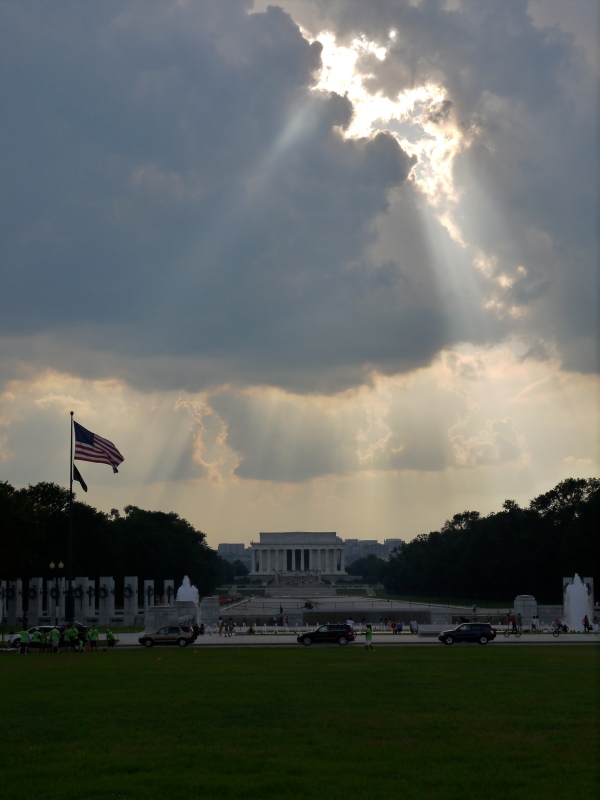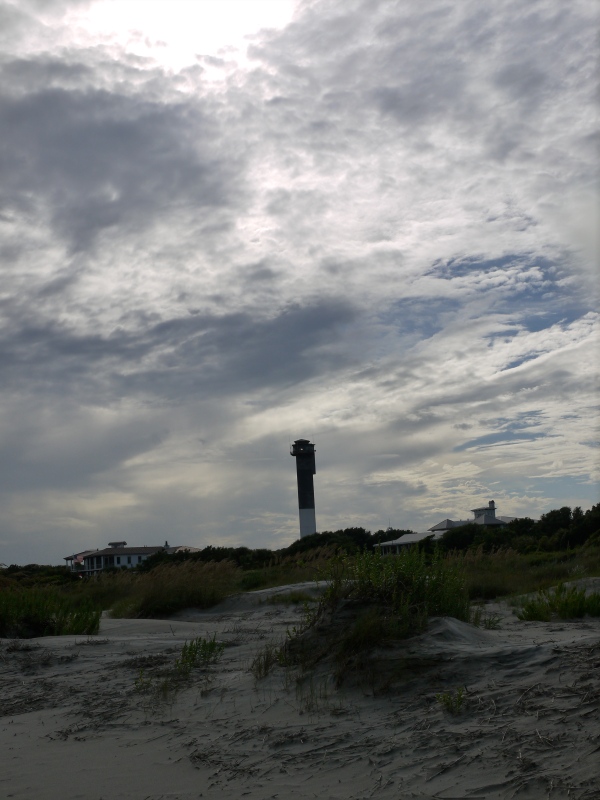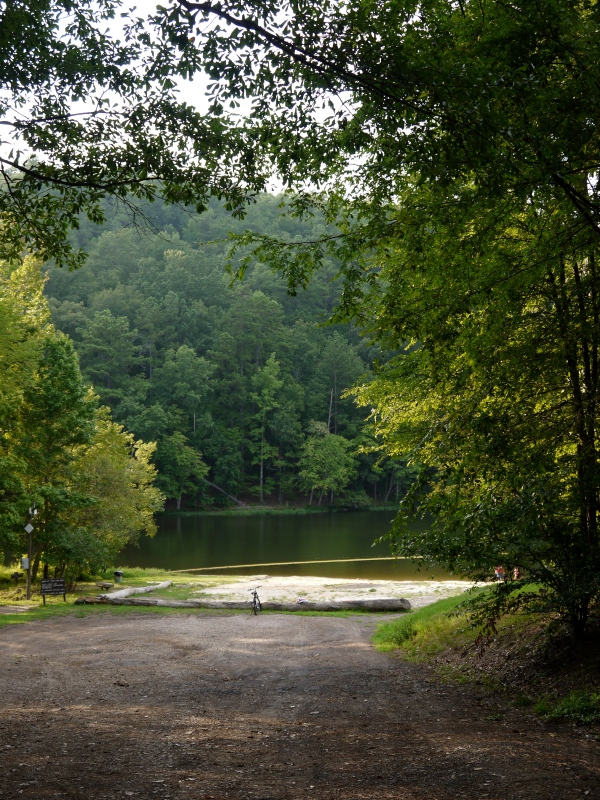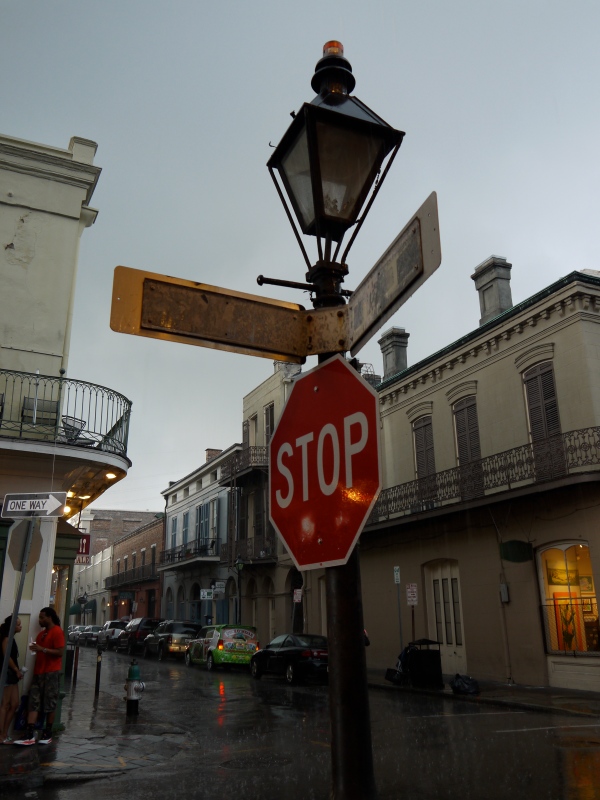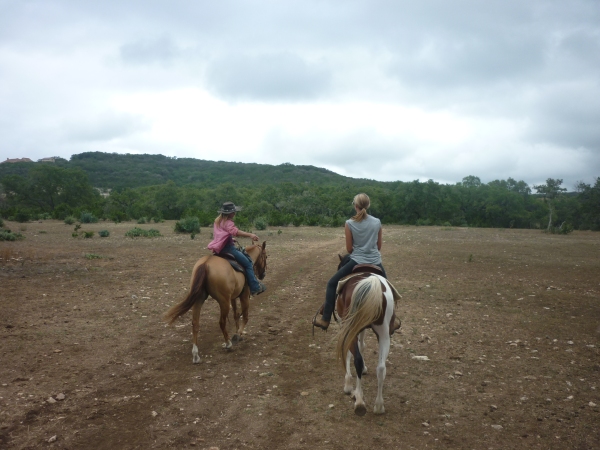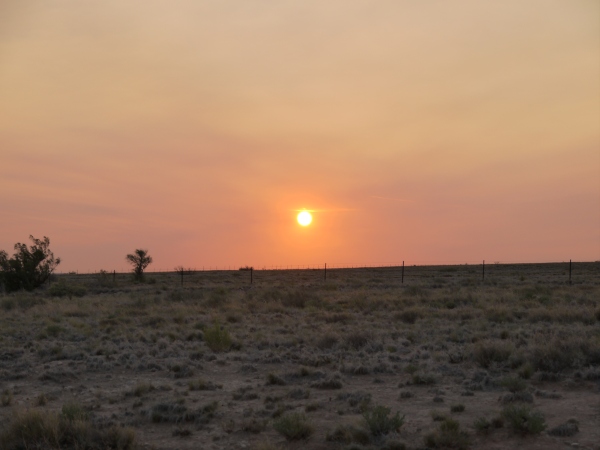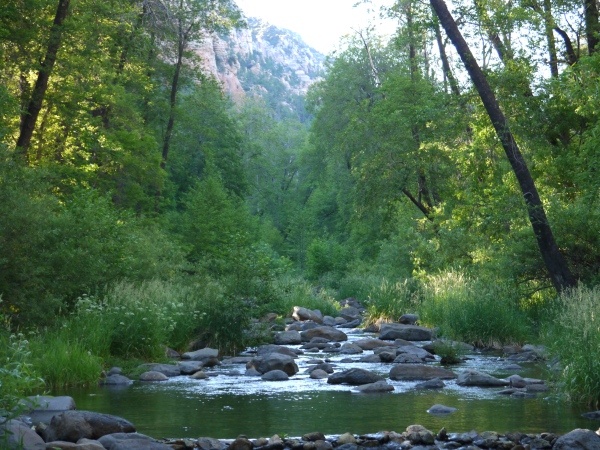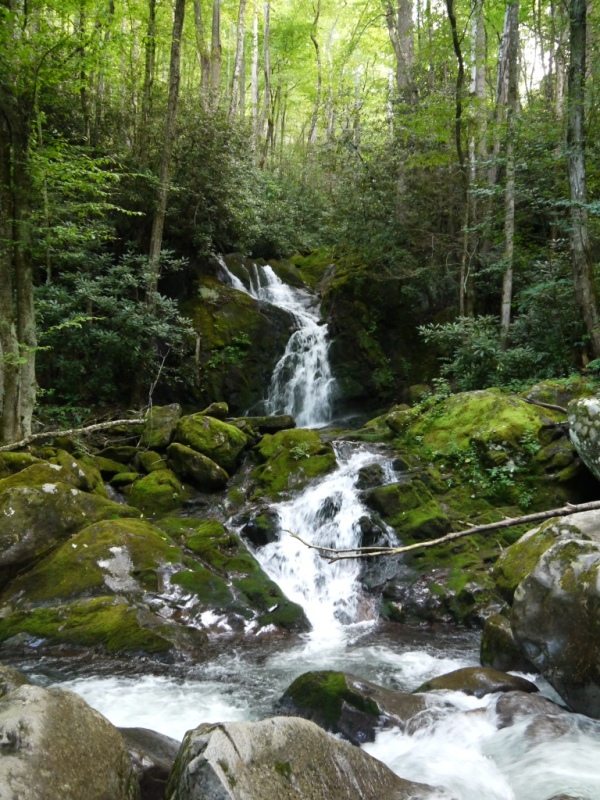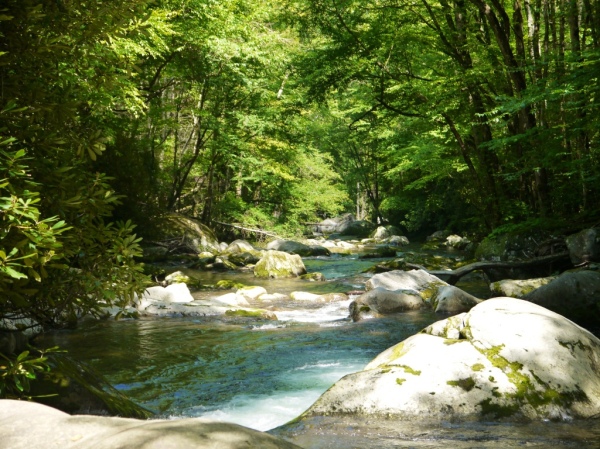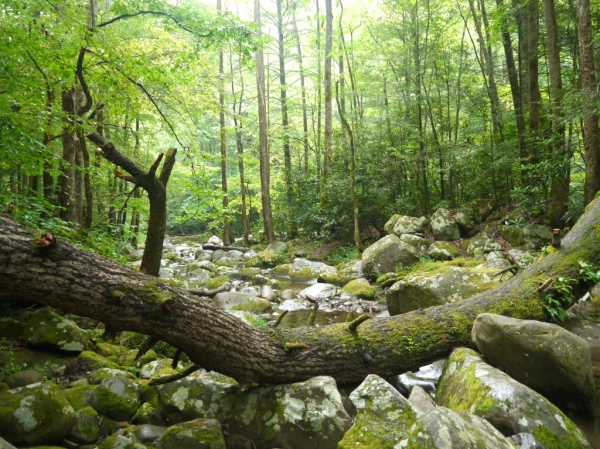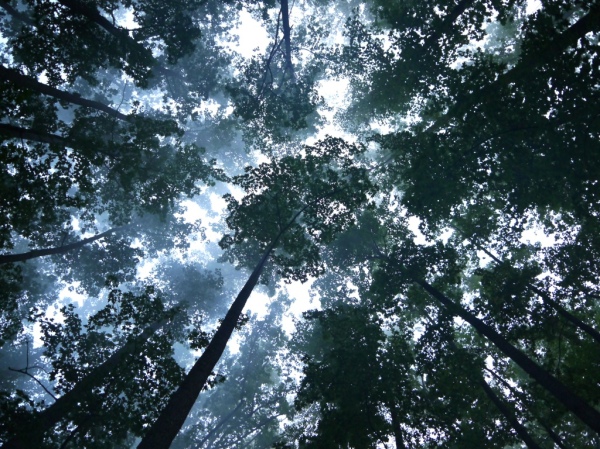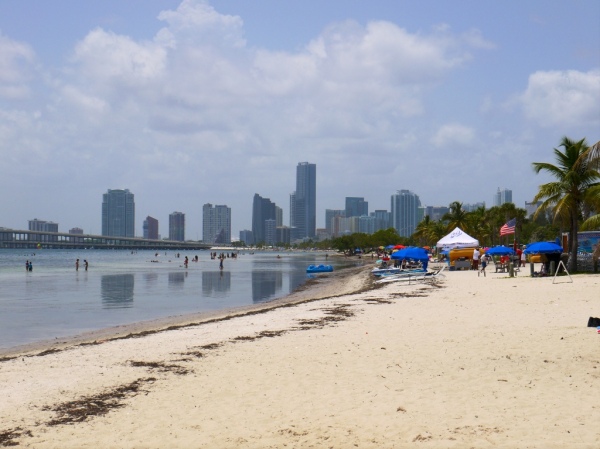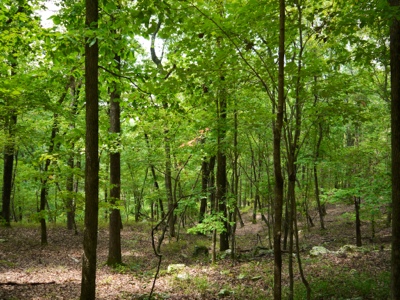Unsportsmanlike or Unladylike: Azarenka and the Media

In June, 2011, I wrote a blog post about Rafael Nadal’s untimely medical time outs (MTOs). My article came on the back of Nadal receiving a nine minute medical time out before a tiebreak against an in-form Juan Martin del Potro at Wimbledon. Nadal complained that he felt his foot was broken, before proceeding to run his way to a four set victory. Del Potro was, understandably, annoyed. “He was running everywhere and running the same as always. I never thought he’d stop,” he complained. I chose to write about this incident because it was far from the first time Nadal had called for a MTO in important moments. Philipp Petzschner is a player who would sympathise with del Potro. Leading by two sets to one at the same tournament one year earlier, Nadal called a MTO before the Petzschner serve. Petzschner lost his serve, and ultimately, the match.
Nadal was questioned by the media on both of these occasions, and each time he denied any wrong-doing and insisted his injuries were legitimate. The media, apparently satisfied, moved on with more mundane questions. Nadal and other ATP players who have on occasion used what could be considered cheating, (at the very least bending the rules), have had their explanations accepted by journalists. Fans who speak out are accused of being sore-losers, or haters of the player in question.
This was the way of tennis – sometimes players bent the MTO rules, sometimes fans complained – until recently. When Victoria Azarenka took a MTO while leading Sloane Stephens by a set and 5-4, she was positively crucified in the press room. Azarenka had come back from a ten minute off-court MTO to break Stephens, and therefore win the match. The Belarussian hadn’t helped matters by admitting she was ‘nervous’ in her post-match interview, but she explained to press that the reason she left the court was for a locked rib for which she had to remove her dress. She then apologised for the misunderstanding and ill-timing. Her explanation, however, didn’t satisfy journalists hungry for a controversial story, and the questions kept coming at machine-gun intensity. Among others, Azarenka was asked the following questions:
- Can you understand that people perceive that as being gamesmanship at that particular point in the game?
- Would you agree the timing was unfortunate?
- What treatment did you have?
- In your previous answers, you attributed the not being able to breathe being pretty much directly to not converting the five match points in the game before. You said you had to take some time to get your mind together when you were going off court. This seems like a very different answer that you’re giving now.
- Do you have any sympathy for Sloane, who had to sit there for 10 minutes waiting to serve to stay in the match?
- So in hindsight, do you think you owe an apology to Sloane just for the timing of it, the medical timeout?
- Do you think some players are abusing this rule, not yourself, but other players use it as a stalling tactic sometimes that you’ve experienced?
In total, Azarenka was asked 23 questions related to her MTO. She was asked four questions not related to the injury. Never before had any player being given such a drilling in the interview over a MTO. Azarenka must have walked out of that interview room hoping she had weathered much of the storm. However, headlines the following day proved the media were far from done. Rather than focusing on Azarenka’s dominant position as the World Number 1, or Stephen’s break-through as a young American to watch, media worldwide accused Azarenka of being a cheat and a poor sportswoman.
While Azarenka began a series of interviews to try to halt the negativity, certain journalists were still tapping away at their laptops, the keys sounding their emphatic disapproval. From her semi-final all the way through to after her Australian Open victory, Azarenka was the target of negative remarks by both media, fellow tennis players and fans. The Australian crowd gobbled up accusations of choking and gamesmanship by local papers, and jeered and heckled Azarenka in her final against Li Na. Australia’s dislike of Azarenka still hasn’t stopped. As recently as three days ago, Melbourne’s The Age published a letter where the writer admitted he had always been disgusted by the likes of John McEnroe’s behaviour, but he was surprised and disappointed that women had now sunk to those standards. As if foul-play by the ‘fairer sex’ was worse than anything McEnroe could ever have said or done.
It was the journalists that sparked the complaining among fans, and certain journalists took their criticism to a whole new level. Dark words spewed forth from those media caves under Rod Laver Arena, attacking Azarenka not only for her MTO, but for her clothing, grunting, personality and earphones. Journalists used Twitter and their websites to compare her in a disparaging way to ATP players. Neil Harman of The Times displayed his selective memory when he tweeted that he can’t remember Federer, Nadal or Murray ever using a MTO or bathroom break to their advantage. While most journalists called for tougher MTO rules or ventured as far to call Azarenka a cheat, the ink on others’ pages reeked of sexism.
Bruce Jenkins of SI.com started off his article by comparing Azarenka unfavourably to Djokovic, waxing lyrical about the Serbian’s extroverted personality and easy way with fans and media. He pointed to Azarenka’s hoodie and earbuds in contrast to Djokovic’s on-court jokes, stating that Azarenka ‘wished she were invisible.’ Despite hoodies and earbuds being wardrobe staples of youth worldwide, apparently Jenkins is living in an age where we still associate these items of clothing with shady personalities. Why else bring up what she’s wearing? Of course, Jenkins would probably not have complained had she turned up in a short dress minus the Dr Dre earbuds, looking a little more like Maria Kirilenko and a little less like herself. Speaking of earplugs, Richard Hinds of The Sydney Morning Herald created possibly the most offensive article, comparing Azarenka directly with a prostitute when he wrote, “Why pay for a sensory experience you can get for nothing standing outside an open brothel window?’ He went on to ‘joke’ that Azarenka had used her MTO to see a psychiatrist to cure her ‘fragile mind.’ He didn’t stop with Azarenka; Redfoo was described with disdain, and Maria Sharapova called ‘sour-faced’ (which I am sure she would have used as a Sugarpova marketing opportunity had she heard). Hinds ended his article by saying that the Federer/Murray match would be good value for money, just as he had started it by saying the women’s final was not.
For writers such as Jenkins, Azarenka’s MTO was simply another thing to dislike about the World No. 1. Jenkins wrote in 2011 that ‘there’s nothing particularly special about Azarenka’s game… as such, fans would prefer a touch of elegance or class.’ Jenkins went on to describe Azarenka as a racket-smashing brat with a boring game and grumpy attitude. You can almost hear him sighing through the page as he writes, ‘it is not becoming.’ In comparison, Peter Bodo of tennis.com almost came across as complimentary when he wrote in 2012 that Azarenka is impatient, blunt, impetuous and ‘not entirely sunny-dispositioned.’
Judging by the lack of sympathy Azarenka was given, it is clear the some members of the media have never particularly warmed to her. Unlike Rafael Nadal, who is loved my fans and media alike, the Belarussian’s explanation for her MTO was rejected as false. But was this really about fair play, or were writers like Jenkins simply using it as an excuse to express their dislike of Azarenka? If the issue was really about the MTO, the same treatment would have been given to Rafael Nadal, or to Roger Federer when he admitted to taking a bathroom break to allow the sun to move across the court when losing to Nikolay Davydenko some years back. By discussing Azarenka’s clothes, her earphones, her personality and her grunting, journalists and fans gave their game away. The issue was never that Azarenka’s behaviour was unsportsmanlike, it was that it was unladylike.
Despite her long blonde hair and shapely legs, Azarenka refuses to play the role of the giggly girl; she won’t play cute to the public, won’t hide her fierce competitive spirit underneath an Ana Ivanovic smile, and she won’t adopt a ladylike celebration instead of poking her tongue out or shoving her finger in the air. Much like Maria Sharapova, who was once dubbed the ice-queen and frownded upon for her I-don’t-give-a-shit attitude, Azarenka has so far refused to present herself as anything other than who she is. Whether she eventually hides her true self to escape the wrath of those keyboard warriors remains to be seen. But perhaps Azarenka will stay as she is, and one day raise her middle finger to those who believe her attitude and dress-sense is ‘unbecoming’ for a lady. It may not be a move suited to the press room, but it would be an inspiration to independent women everywhere. I, for one, would be among her most vocal supporters.
Dark Horses and Donkeys… Who I’m Picking (and Who I’m Not) for the Australian Open
Christmas is coming and while I’d love to say this time of the year means family and being thankful for everything, the first thing that comes to my mind when the air warms and Christmas approaches is that the Australian Open is less than a month away. To be fair, I have a legitimate excuse; my brother and father will be coming over for the tournament while Christmas will be spent without them, (thanks for that, expensive airlines). I tend to spend the Australian Open taking a break from thinking and writing about tennis. I immerse myself in the fan experience and if I get inspired along the way, so be it. I probably won’t be writing too much about it then, so I’m releasing my dark horse picks ahead of everyone else. Here’s the players I’d be backing if I were a betting girl, and those I definitely wouldn’t.
Dark Horses
Martin Klizan: Martin may not sound like a particularly formidable name, but both Jo-Wilfried Tsonga and Jeremy Chardy discovered the hard way that you can’t judge a book by its cover when he upset them both at the US Open this year. The lefty followed up his USO success up with an ATP World Tour Title in St Petersburg, cementing himself as the official ATP 2012 Newcomer of the Year. The Slovak player may be unseeded come the Australian Open and will be a name no one wants to see in the first round.
David Goffin: “Who is this kid,” were words tweeted multiple times when Goffin took the first set off Roger Federer at Roland Garros this year. He followed up his fourth round finish, (yes, he did eventually lose to Federer), by making the third round of Wimbledon just weeks later. Huge wins on clay and grass prove Goffin is a versatile, big-stage kind of player. Don’t be surprised if he uses the Australian Open as a springboard to a fantastic 2013. He may not be a tennis fan’s best kept secret for much longer.
Jerzy Janowicz: Unlike both Goffin and Klizan, Janowicz managed to capture the world’s attention when he made it all the way to the Paris Masters final at the end of 2012. With the tournament suffering from a depleted field, Janowicz provided the media with plenty of headlines as he shocked Marin Cilic, Andy Murray, Janko Tipsarevic and Gilles Simon with ruthlessly aggressive play. He lost to first-time Masters winner David Ferrer in the final, but the 22-year-old Pole finished the year in the top 30 and will be closely watched come 2013’s first Grand Slam.
Varvara Lepchenko: Her name might not sound particularly American, but she is in fact one of the USA’s most promising up-and-comers after gaining citizenship in 2011. With visa issues sorted, Lepchenko had her best year on tour, rising up from a ranking of 127 to an end of year ranking of 21. Lepchenko played the role of giant killer in 2012, making the third round at both Wimbledon and the US Open and the fourth round at Roland Garros. At 26 years old, the former Uzbek player prides herself on mental strength, meaning she’s unlikely to choke under the pressure of being touted as one to watch.
Heather Watson: With all eyes on her popular compatriot, Laura Robson, Watson did an excellent job of sneaking under the radar in 2012. The British No.1 made fewer headlines than the glamorous Robson, but she captured her first WTA singles title at the HP Open and won two doubles titles, showing she lets her racket do the talking. Watson possesses a strong mentality and is capable of felling a few of the big names in the early rounds. At 20, she’s on the cusp of making a big breakthrough.
Donkeys
Bernard Tomic: There’s no doubt the controversial Australian plays best on his home stage, but with issues both legal and tennis-related, the 20-year-old is more likely to crumble under the pressure than make another fourth-round run. Dubbed ‘Tomic the Tank Engine’ for his lack of willpower and stamina, there is no reason to suggest Tomic will suddenly up the ante come Melbourne. In fact, he’s currently looking more likely to spend more time in court than on one.
David Ferrer: It might be tempting to think the ‘other’ Spaniard will finally have his time in the sun come January based on his recent Masters title and a superb 2012 in which he won seven titles – more than any other ATP player. However, despite his impressive season, Ferrer still failed to beat Novak Djokovic, Roger Federer and Rafael Nadal, although he did topple Andy Murray once. His hasn’t shown any signs of overcoming the big four, and while he’s a write-in for the quarter-finals, it’s hard to see him progressing past the semis.
Sam Stosur: Unlike Tomic, this Australian has plenty of motivation and ambition to succeed, but a lack of confidence often lets her down when times get tough. Her unfortunate cases of nerves are even more prevalent at home. If Tomic does lose early, all eyes will be on Stosur and the pressure will be as intense as it was in 2012, when she lost first round. Stosur has the capabilities to succeed at Melbourne Park, but she’s far from a sure bet.
Anastasia Pavlyuchenkova: Pavlyuchenkova hasn’t caused the controversy Tomic has and she’s much better behaved, but an underlying lack of motivation is familiar to both of them. Unless she, like Tomic, starts training harder and getting herself into shape, she’s going to have a tough time improving on a disastrous 2012. She has the talent, but talent is nothing without work ethic.
So there we have it. Let me know your picks for the Aussie Open in the comments section below (and don’t forget to check out onthegotennis, where I’m writing more often).
On Doping – We Need To Calm Down
I’ve been reluctant to write anything in regards to the Lance Armstrong scandal, mainly because I don’t want to add fuel to the fire. But it seems the blog posts and articles on whether tennis is doing enough to prevent doping aren’t going to cease anytime soon, if anything, they’re becoming more outrageous in their claims. There haven’t been many articles taking a calm and reasonable approach to the subject; it seems we are all willing to point the finger and cry witch based entirely on our own suspicions. Those suspicions are growing more and more hysterical.
It isn’t that I believe tennis is an entirely clean sport. The Wayne Odesnik case showed us that it isn’t, and no doubt he isn’t the only one. Neither do I believe that the testing the ITF currently employs is strict enough – if Roger Federer and Andy Murray are calling for more blood tests, then they’re probably needed. What concerns me more is how quickly fans have lost faith in their sport, in their heroes, considering Armstrong is famous for cycling, not tennis. Novak Djokovic is no longer the spokesperson for a gluten-free life-style, but a doping fiend due to his increased fitness and hypobaric chamber. Never mind that he’s gradually improved as he became older – 24 is considered a tennis player’s peak, Djokovic is 25 – and that using a hypobaric chamber alone is not illegal. In fact, accusing him of doping because of it is a little like accusing me of making meth because I bought some Codral. It isn’t just Djokovic who’s surrounded by doubts – Rafael Nadal isn’t the sympathetic victim of knee tendonitis anymore, but an EPO-pumping freak who takes long breaks to escape mandatory testing, (his loss in the 2nd round of Wimbledon was a deliberate ploy, nothing more). And Roger Federer doesn’t sweat as much as the others because he, too is taking some sort of drug, (although that sounds like a Botox problem, not a HGH one). And while I admit it was a little concerning to see top-ten names associated with Luis Garcia del Moral, it doesn’t actually mean anything. There is no evidence that those associations were anything malicious. God knows what the response would have been if that list of names had included Rafael Nadal.
What surprises me even more is that this mass hysteria (and it is that, until someone substantial is found guilty) has come after a cycling incident. Cycling. The sport I have never shown any interest in because it is infamous for doping. Cycling already had a reputation as a corrupt sport and I for one wasn’t at all surprised when Armstrong was finally convicted. In fact, I think my first response was to roll my eyes. We already knew cyclists doped – theirs is a reputation comparable to that of the East German swim team. And many people already suspected Armstrong wasn’t all that innocent. So why Armstrong’s conviction has led to the entire tennis community wringing their hands and fretting that their stars could also be doping is beyond me. Has there been a similar response in other sports that have good reputations? Is golf flipping out that perhaps Tiger’s break from the sport after a messy divorce coupled with knee issues was actually a cover-up for a positive drug test? Is badminton doubting their stars? Is netball?
It’s a good thing that Armstrong’s case has prompted the ITF to consider adopting the biological passport system. It’s fantastic that journalists and players are letting the authorities know that they want more transparency in drug testing programs and they want those programs to be stricter. Armstrong’s conviction will force every single sport to look harder at what they are doing to ensure their sport won’t suffer a similar fate. But it’s nothing but a shame that fans and bloggers no longer believe in a sport they’ve loved so much. It’s worrying that a man from a sport already so corrupt can cause fans and bloggers to lose faith in their own heroes, in their own sport. Are we so pessimistic? So paranoid that we start looking for evidence in every injury time-out, in every puff of an asthma inhaler? I even saw a fan comment that he ‘wants’ a scandal to happen in tennis, he is so convinced there is one.
There are lessons to be learnt from the Armstrong case. Perhaps none so strong that fandom can be fickle and that people are naturally cynical.
We need to take a deep breath and calm down before this becomes tennis’s version of the Salem Witch Trials.
Off-court Fashion Blogs
I am currently doing some off-court fashion blogs for OnTheGoTennis
So far I’ve done Maria Sharapova and Rafael Nadal with Serena Williams to come over the next couple of days. Make sure to check them out!
America the Beautiful
It’s all over now. I’m back in Melbourne with a new job, shaking off the post-travel blues. This blog will return to tennis soon. Until next time, here are some of the my favourite images I managed to capture while in the United States (from most recently visited).
Please note, these images are mine and are subject to copyright. Please do not use them without my permission.
The Grand Canyon, Arizona
New York City, New York
Washington DC
Shenandoah National Park, Virginia
Great Smoky Mountains, North Carolina
Charleston, South Carolina
Jekyll Island, Georgia
Oak Mountain State Park, Alabama
New Orleans, Louisiana
Bandera, Texas
Roswell, New Mexico
White Sands National Monument, New Mexico
Outer borders of Zuni Pueblo, New Mexico
Sedona, Arizona
Palm Springs, California
California Boy
Shaun saunters over to us with the easy confidence of a Californian man in his twenties. “What’s up guys?” he asks in a vague Californian accent as he shakes our hands and gives us the once-over. “What brings you guys on a Segway tour?’ We burst out laughing. The Segway tour is an in-joke, a surprise gift to my brother who can’t keep the grin off his face. We try to explain. “Dude,” Shaun laughs, “I just thought you musta been eating some funny cookies before ya came.”
From what I can tell, Shaun is about as Californian as they come. He’s originally from New York, but the sun and surf of San Diego have washed away all traces of the Big Apple. He chats constantly about skateboards, Segways and ‘getting wasted.’ His language is peppered with ‘dudes’ and ‘chicks’, and while he isn’t classically good-looking, he’s attractive in a boyish sort of way. Shaun’s the kind of guy who picks things up quickly, from roller-blading to women. He flirts openly with girls as he glides past them, transforming the Segway from something off the Big Bang Theroy to a toy only the coolest cats can get their hands on. “I found this job on Craigslist,” he tells. “I thought it sounded fucking cool. I get to zoom around on this thing all day and get paid for it.”
Conversation comes as easily to Shaun as silence does to us, but he doesn’t seem to mind our awkwardness. By the time our hour is up he’s said 1000 words to our 1, but perhaps that’s what makes him a good tour guide. We thank him and leave as he shuts up shop and strolls out into San Diego, where bikini-clad chicks and dudes with beer await him.
Sights and Sounds of The Bronx
The tennis courts absorb the sounds of The Bronx. Like the borough itself, they’re cracked and torn in places, but it makes for all the more personality. And The Bronx has plenty of personality. Situated in the South Bronx, these courts have seen it all. We play to an almost constant stream of hip-hop music, snippets of songs floating out of passing cars and into our ears. Behind me, three men sit on benches, watching us play a sport seldom seen in these areas. It’s basketball, not tennis, that is the game of choice and it’s played on nearly every corner. Those courts move along to the music, the ball thumping with every beat. It’s a loud game, a game more suited to the neighbourhood. Tennis is too silent here, but it’s all the better for soaking up the sights and sounds of The Bronx.
I’m waiting in line in a corner store cramped for space, its air is musty and its cans covered with dust. A boy no more than 14 stands behind me, talking loudly to the back of an older woman.
“She can’t work because she has to look after him,” he almost shouts. “And if she can’t work, there won’t be no money. And if there’s no money, she can’t keep the house.” The older woman turns.
“She won’t lose the house,” she says, a tinge of boredom to her tone.
“But she ain’t got no money. You gots to work to get money and she can’t work. That’s just the way of it, isn’t it?” The boy folds his arms, defeated by the woman’s silence. He’s got bigger worries at 14 than I hopefully ever will.
It’s almost midnight but the streets of The Bronx are still alive. People sit on plastic chairs outside corner stores and on the stairs of their apartments, socialising with their neighbours. For once, there’s no music playing. We walk past a girl who’s about 10 years old. She’s dancing to a beat only playing inside her head. Her body jolts and her hips move with an easy energy. It’s captivating and I’m jealous of her rhythm. I wish I could watch for longer.
We’re on the number six line, coming from Manhattan and heading back to The Bronx. It’s nearing five in the evening and a well-dressed work crowd dominates the train. Women with carefully shaped eyebrows and sky-high heels sit while men stand with stern expressions to match their briefcases. As we heard north the business types slowly disembark until there’s none left. For a while the carriage is empty save for us, until a new demographic begins to emerge. These people favour low-slung jeans, their boxers showing but faces hidden by hoods and caps. They carry backpacks and listen to music, some are mumbling the words as the train rumbles on. By the time we reach our station, we’re the odd ones out. But nobody bats an eyelid. Heads down, hoods up, they carry on their way.
 Image credits: Joe Conzo Jr.
Image credits: Joe Conzo Jr.
“So y’all been on the road for 2 months, and you’ll be here another month?! Sorry for my fascination, it’s just, I don’t meet people who… Leave.”
It was like we had escaped from Hotel California, such was the astonishment of this young man from New Jersey that we met playing tennis in Savannah, Georgia. To him, the concept of leaving our jobs and traveling was strange, interesting and most of all, abnormal. His wide eyes and constant questioning helped him stick in my mind, but in truth it was a conversation we have had many times before. For while most Americans believe they live in the greatest country on earth, many of them don’t seem to venture too far from their own backyard.
In Houston, Texas, we chatted to two young men in Subway who were amused by our accents. After learning of our travels, they asked James if he’d been to Mexico. When he said yes, they wanted to know all about it. They hadn’t been there since they were two years old, they said, and were desperate to know what it’s like. Now perhaps there were reasons these two hadn’t jumped in a car and simply crossed the border, but taking them at face value, we were shocked.
“Erm, you should go,” James replied, “You live far closer to the border than I’ll ever be.”
The story is the same all across America. People in Savannah and Charleston told us they had heard the Great Smoky Mountains were beautiful, but they hadn’t actually been there, (it’s a five hour drive from Charleston). They have looked at pictures and dreamed of a holiday, but they haven’t been able to drag themselves away from work, family and day to day life.
In Wyndham Hotel we participated in a survey (in order to get a free meal) and were asked what our dream destination was. We were stumped. For us, nowhere is a dream. If you work hard and save the money needed, anywhere is possible.
I understand it is harder to travel overseas if you have a family, mortgage and a job that you don’t want to chuck away. But quite frankly, I don’t see an excuse for an American not to visit the rest of America. It’s too diverse to just visit one section, too beautiful to forsake. And besides, traveling improves you as a person. Your mind opens to different cultures and ways of life, (don’t think there’s culture in America? Visit the South) allowing you to think clearer and see better. The Americans we’ve met who have traveled their own and other countries have been the most interesting to talk to. Quick with a recommendation or a background story about the area, they’ve been a wealth of information, knowledge and wisdom. Some of them have even been able to share stories about Australia and New Zealand.
I’m not sure America is the greatest country in the world – I haven’t visited every country yet – but it really is wonderful. If you’re lucky enough to live here, please, please don’t confine yourself to your own state. You never know what is across the border.
Perhaps you might like to start with the bewitching Great Smoky Mountains, which kiss the border between Tennessee and North Carolina.
Miami: Boobs, Brats and Bling
Rap music pulses through wet pavements and fills our ears with heavy bass. A slick black car with oversized wheels that glitter in the lights of Miami Beach makes its way slowly through crowds of people. Other cars are backed up behind it, but the black beast takes its time. It slows to a stop in front of us, and the driver opens his door to show off neon lights and a scantily clad girl grinding to music on a tv screen. A passenger hops out. His oversized white t shirt clashes against the dark night sky. He pulls out a pink umbrella and moves to the music as his companions film him. He’s standing in the middle of the road, but drivers behind him stop accordingly and their cameras flashes make more bright lights. The streets are crowded now, all staring at the black car and its occupants.
In my home town, teenagers lower their Nissans and blast music from a muffled speaker as they drive up and down the street, trying their best to look cool, to look hard. In Miami, they don’t try. These are the people those boys from home want to be, this is who they’re trying to emulate. But they never will. Not without Miami.
Earlier on in the day, before I went seeking the oddly beautiful and the beautifully odd on Ocean Boulevard, I’d been at the tennis courts in Key Biscayne. The Sony Ericsson Open may be well finished for the year, but the kids on court look like they’re trying out for it. There’s a junior tournament going on, and two ten year olds have managed to shout and scream enough to require their own official. At first, the taller boy seems to be the one to blame. He c’mons on double faults and fist pumps on points he wins. When he breaks the smaller boy, he thumps at his chest like a 10 year old Novak Djokovic. But the smaller boy soon shows his snotty side when he pulls ahead. He yells out deuce when he’s down 15-40, prompting an interference from the official. He screams out in three languages; vamos, allez and ‘let’s go’ are all part of his colourful vocabulary. He wears a backwards Rafa hat, but clearly he doesn’t admire him for his sportsmanship. The parents, both sides camped on opposite ends of the court, are barely any better. The smaller boy’s mother leans out of her chair to argue a line call. She’s all bleached blonde hair and gold hot pants and wedged heels. She’s so Miami, except that she’s Russian. Both families pump their charges up between sets, like it’s a boxing match for life or death. But it isn’t. It’s just a tournaments between 10 year olds. God knows what they’ll be like in another 10 years.
Miami isn’t all false glamour and plastic bodies. It has another side, a side of Cuban culture and beautiful beaches away from the imported sand of Miami Beach. But while these things make Miami warm and welcoming, they’re not the most exciting to write about. Hence Miami’s reputation for boobs, brats and bling will live on. But after the hospitality and biblical nature of the South, Miami makes for more than a nice change.
To read about my time at the tennis in Atlanta, Georgia, click here
Alabama and America’s Best Kept Secret
America’s best kept secret.
What a cliche.
How many times have I heard those words uttered during these last few months in the states? Lonely Planet can’t seem to think of a different phrase to call that hidden restaurant or the little museum around the corner, and the stores themselves seem to take it to heart. “We are America’s Best Kept Secret,” screams the neon sign outside that ice cream shop in Miami or Dallas or New Orleans or wherever else you might be. But they’re not, no commercial business or tourist trap can be. Because America’s best kept secret isn’t found in the bustling towns of Florida or Texas, and it isn’t something you can eat or consume. But America’s secret can be found it every State. You can smell it, taste it, breathe it in and live it. And my favourite so far lives in Alabama, not too far from the history-riddled town of Birmingham.
Oak Mountain State Park has nature even my home county of New Zealand would be envious of. The dance of squirrels brings treetops to life above an endless world of crystal clear lakes and forest teeming with wildlife. Forecast thunderstorms swerve around us, fish nibble at our toes and deer run when we get too close. But for such a magical place it’s surprisingly free of human presence. On a walk by myself I encounter no one but a great white bird. Our campsite sits beside a lakeshore and hiking trails, but no neighbours arrive to disrupt our peace. We roast marshmallows to the blissful sound of lapping water and the gentle buzz of insects. We wake to birds and squirrels. It couldn’t be more peaceful and it couldn’t be more beautiful.
Americans are so spoiled in their selection of National and State Parks that the ones we visit are rarely crowded. Whether we were roasting in Joshua Tree or hiking up Bear Mountain in brilliant Sedona, it hasn’t been hard to find a quiet place, free from the rush of traffic or the screams of children. Before this trip I thought of America as bright lights and loud cities and louder people. And it has all of those things, but now when I think of this country I can add trickling waters and hungry squirrels. America is a place that can be as loud as you want or as silent as you need.
That’s its best kept secret.







